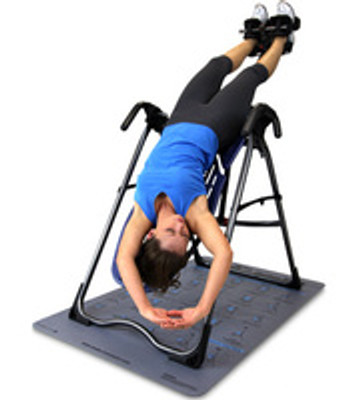5 Workout Moves You Should Never Do
Bethaney Wallace on 23rd Apr 2014
When it comes to working out, nothing keeps you quite as healthy as staying on the move. Regular exercise boosts your metabolism, it keeps your blood pumping, and it’s a great way to add energy throughout the day. Especially during lethargic afternoons. Not to mention added benefits such as weight loss, increased health, and an overall better disposition. (Studies show that those who work out have better energy levels and are in a better mood on a consistent basis. And if you don’t think it applies, give it a test and find out.)
However, just because working out in itself is healthy doesn’t mean you should blindly jump in. Novices can be hurt both mentally and physically from jumping in too soon. Following the right steps, however, are only a few simple steps away. From following safety protocols, to getting the best workout possible, this healthy habit can offer a number of outside tips. Remember that a solid mix of knowledge, execution, and results will best drive your exercise efforts into the best possible outcome.
To best utilize your next workout:
5. Mind Your Neck
A common pose for sit ups is to place one’s hands behind the head and sit forward. And repeat. However, this can also cause you to pull on the neck (even unwittingly so) each time you move up, creating excess pressure and strain. This occurs naturally when our arms rise with the “up” motion. When pulling too hard, you can even cause permanent damage. Instead, place your arms across your chest, or put them straight out in front to avoid any muscular injuries.
4. Use a Spotter
Lifting can be dangerous, especially when looking toward heavy weights. Picking up too much too fast can tear or strain the body, while attempting more than you can safely hold will leave you stuck without a safe exit. Whether bench pressing or working with free weights, enlist the help of a friend to help spot (and watch over) you every time you lift.
3. Focus on Muscle Groups
Before starting a workout, decide which area of the body you wish to work out, and then focus on moves that will help enhance that specific area. This can be done through research, personal experiencing (by determining which muscles are sore after which workouts, etc.), or through the help of a personal trainer. You can also layer these pointed workouts to obtain the best results.
2. Pack on the Protein
Before working out (and after), it’s a good idea to stock up on protein-rich foods, such as nuts, meats, or shakes, which can repair muscle groups. Even if you aren’t looking to bulk up, these healthy meals can leave the body in better condition, as well as providing for better blood and nutrient flow throughout the body.
1. Keep it Regular
How often have you worked out a few times, and then immediately fell off the habit? Though exercise is easy to miss due to bad weather or busy schedules, it’s also most effective when done consistently. To make the best use of all your momentum, stick to a regular (even if it’s only semi-regular) work out pattern. That way the muscles receive ongoing movement, the body gets blood pumping every few days, and you can increase the efficiency of each bout of exercise.
To ensure safe, effective workout sessions, there are plenty of simple steps that can be followed. Remember the above each time you step into your exercise clothes, and remember just how much can be gained from getting the blood flow pumping.

